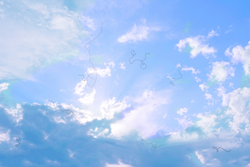
Understanding Myopia
Myopia, or short-sightedness, is a vision condition where near objects appear clear while distant objects become blurry. It is a condition that affects millions of individuals worldwide, and children are not exempt1. What exactly causes myopia, and why do some children develop it?
The Role of Genetics
Genetics plays a significant role in myopia development. If you are wondering why some children are more prone to myopia than others, family history might hold the answer. Research shows that if both parents are myopic, the risk of their child developing myopia increases significantly. In cases where one parent is myopic, the risk is 1.5 times2. Having two parents who both have myopia increases the risk to their child by six times3.
Environmental Influences
While genetics is a key factor, environmental influences are equally crucial. The lifestyle and activities of a child can contribute significantly to the development and progression of myopia. In today's digital age, many children spend extended periods engaged in near work, such as reading, using digital devices, or doing homework. This excessive near work can increase the likelihood of myopia development4.
The Consequences of Early Onset Myopia
Early onset myopia can have long-term consequences. Children who develop myopia at a young age are at a higher risk of its progression5. This means that their myopia may worsen over time, potentially leading to high myopia (greater than -5.00D). High myopia is associated with an increased risk of sight-threatening eye conditions, including cataracts, glaucoma, myopic maculopathy, and retinal detachments6. These conditions can significantly impact a child's quality of life and overall eye health.
Singapore: The Myopia Capital of the World
Singapore has gained the unfortunate title of 'The Myopia Capital of the World.' The prevalence of myopia in Singapore is alarmingly high, with 65% of children becoming myopic by the age of 12, and 83% of young adults experiencing myopia. The projections for the future are even more concerning, with an estimated 80 to 90% of Singaporean adults above 18 years old expected to be myopic by 2050. Additionally, 15 to 25% of these individuals may have high myopia7.
In light of these statistics, it is clear that myopia is a growing concern that should not be ignored. Detecting and managing myopia early in childhood is crucial to prevent its progression and the potential development of high myopia and sight-threatening eye diseases. Regular eye check-ups and discussions with eye care professionals are essential to ensuring the visual health and well-being of your child. By addressing myopia promptly, we can help our children maintain clear vision and a brighter future.
How Essilor® Stellest™ Lenses Can Help Your Child
With Essilor® Stellest™ lenses, you can reduce your child’s risk of developing high myopia and avoid future vision complications.
Essilor® Stellest™ lenses are spectacle lenses that can help slow the progression of myopia in children. The results of a clinical trial conducted in 2021 showed that two out of three children who wore Essilor Stellest™ lenses did not need a prescription change after the first year, and after the first year, the eye growth of nine out of ten children wearing Essilor Stellest™ lenses was similar or slower than non-myopic children8. It works by using a technology called Highly Aspherical Lenslet Target (H.A.L.T.), which creates a volume of signal in the eye to slow down eyeball elongation9.
For more information on Essilor® Stellest™ lenses, click here or approach our staff at your nearest Spectacle Hut store.
1. World Health Organization. “The Impact of Myopia and High Myopia” 16 - 18 March 2015. https://myopiainstitute.org/wp-content/uploads/2020/10/Myopia_report_020517.pdf
2. “Are Myopic Parents More Likely to Have Myopic Children?” Eyes of New Mexico Family Optometry and Contact Lenses. https://www.eyesofnm.com/2022/04/30/are-myopic-parents-more-likely-to-have-myopic-children
3. “Talking to a Myopic Adult about Risks for Their Children.” Myopia Profile. https://www.myopiaprofile.com/articles/talking-to-a-myopic-adult-about-risks
4. “The Association between near Work Activities and Myopia in Children” Myopia Profile. https://www.myopiaprofile.com/articles/the-association-between-near-work-activities-and-myopia-in-children
5. “Myopia in Children” NUHS. www.nuhs.edu.sg/For-Patients-Visitors/find-a-condition/Pages/Myopia-in-Children.aspx.
6. ”Myopia Complications” Singapore National Eye Centre. https://www.snec.com.sg/patient-care/specialties-and-services/clinics-centres/myopia-centre/myopia-complications
7. ”Speech By Dr Lam Pin Min, Senior Minister Of State For Health”. Ministry of Health, Singapore. https://www.moh.gov.sg/news-highlights/details/speech-by-dr-lam-pin-min-senior-minister-of-state-for-health-at-the-opening-of-the-singapore-national-eye-centre-s-myopia-centre-16-august-2019
8. Jinhua Bao, Yingying Huang, XUE LI, Adeline Yang, Ee Woon Lim, Daniel Spiegel, Bjorn Drobe, Hao Chen; Myopia control with spectacle lenses with aspherical lenslets: a 2-year randomized clinical trial. Invest. Ophthalmol. Vis. Sci. 2021;62(8):2888.
9. “Understanding the new Essilor Stellest spectacle lens” Myopia Profile. https://www.myopiaprofile.com/articles/understanding-essilor-stellest-lens-myopia
← Older Post Newer Post →




